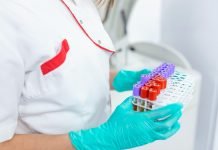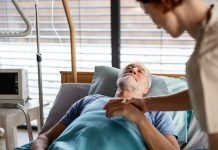
In a groundbreaking study by Cleveland Clinic researchers, a technique called deep brain stimulation (DBS) has shown the potential in helping stroke patients improve their movement and function.
This is exciting news, especially for those who’ve been living with the after-effects of a stroke for years.
What Did the Study Involve?
The research, named the EDEN trial, focused on a specific part of the brain called the dentate nucleus.
Think of this part as the “control center” for many of our voluntary movements and even some aspects of thinking and speaking.
In this study, researchers used DBS to send tiny electric pulses to this “control center” to see if it could help stroke patients regain some of their lost functions.
Out of the 12 people who took part in the study, nine showed significant improvement. Some of these participants had been living with the effects of a stroke for as long as three years.
This offers a ray of hope for many who thought they had reached a standstill in their recovery.
How Does the Treatment Work?
The procedure involves a minor surgery where small electrodes are placed in the brain. These electrodes are then connected to a device, similar to a pacemaker.
After the surgery, participants went through physical therapy sessions. Initially, the device was turned off. But when it was turned on, months into the therapy, the real magic began.
Many participants showed noticeable improvements, regaining levels of function and independence they had lost to their stroke.
Dr. Machado, one of the lead researchers, expressed his excitement: “We saw patients in the study regain levels of function and independence they did not have before joining the research.
This study was a small beginning, but we’re eager to see where the next phase takes us.”
Why is this Study Important?
Strokes are a leading cause of long-term disabilities. Every year, about 800,000 people in the U.S. experience a stroke.
While many survive, they often have to live with lasting effects that can drastically reduce their quality of life. In fact, around half of all stroke survivors need help with everyday activities.
Until now, there hasn’t been a proven method to significantly improve the outcomes for these patients.
Dr. Baker, another researcher from the Cleveland Clinic, mentioned, “The results of the study show that deep brain stimulation, combined with physical therapy, improved movement in patients who were more than a year out from their stroke.
This tells us we’re onto something big and it’s worth investigating further.”
Looking Ahead
This pioneering study is a beacon of hope for many stroke patients and their families. While it’s still early days, the initial results are promising.
Researchers are now gearing up for larger trials to further test and refine this technique. It’s a step closer to giving stroke survivors a chance at a better and more independent life.
If you care about stroke, please read studies about what are ideal blood sugar levels for preventing repeat strokes, and heart attacks, and this healthy habit can lower the risks of stroke and heart rhythm problems.
For more information about stroke, please see recent studies about therapy that could boost recovery from stroke and dementia, and results showing these common prescribed drugs may increase stroke risk by 60%.
The study was published in Nature Medicine.
Follow us on Twitter for more articles about this topic.
Copyright © 2023 Knowridge Science Report. All rights reserved.




